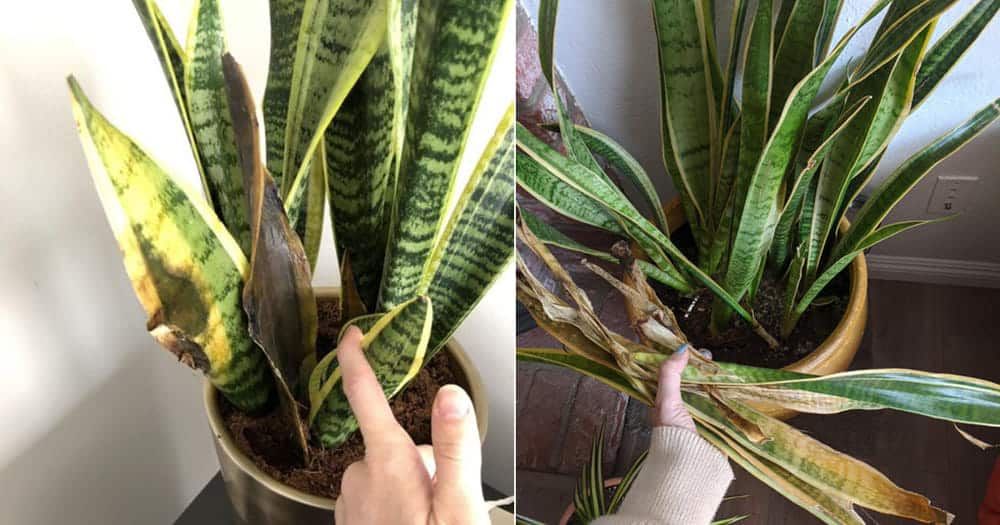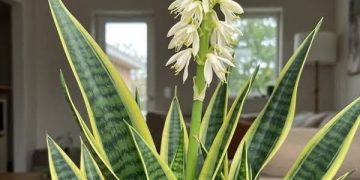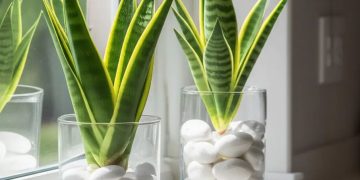Snake plants (Sansevieria), also known as mother-in-law’s tongue, are beloved for their toughness and striking, upright leaves. But when those green blades start turning yellow, it’s a sign your plant is in distress.
In this guide, we’ll explore the most common reasons snake plant leaves turn yellow and how to fix each problem — plus a handy troubleshooting chart and prevention tips.
7 Common Causes & Fixes
1. Overwatering (Most Common Cause)
Snake plants store water in their thick leaves, making them highly drought-tolerant. When watered too often, the roots can suffocate and rot.
- Symptoms: Yellow leaves starting at the base, soft or mushy texture, foul odor from the soil.
- Fix: Let the soil dry completely before watering again. Repot with fresh, well-draining soil and trim away any rotten roots.
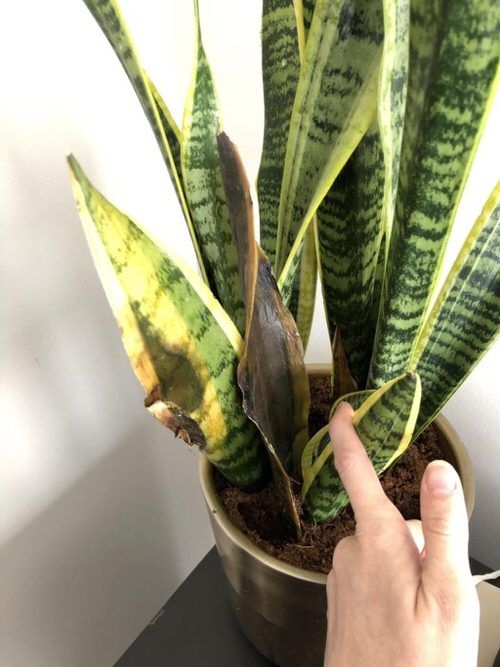
2. Poor Drainage
Even if you water sparingly, poor drainage can trap excess moisture.
- Symptoms: Soggy soil that never seems to dry.
- Fix: Use a pot with drainage holes and add perlite or coarse sand to the soil mix for better aeration.
3. Underwatering
Although they tolerate neglect, extremely dry conditions over long periods can stress the plant.
- Symptoms: Yellowing along with crispy, brown leaf tips.
- Fix: Water when the top 2–3 inches of soil are dry. Adjust watering frequency based on season and indoor climate.
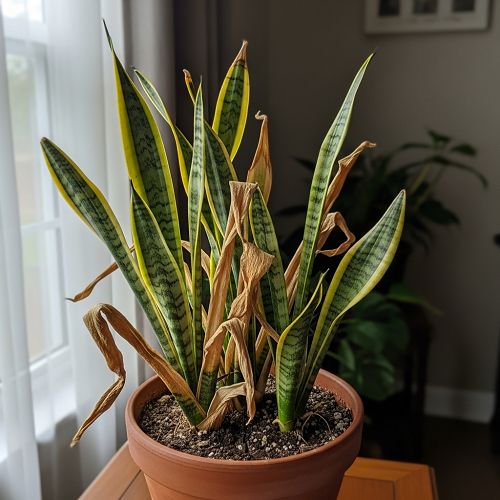
4. Temperature Stress
Snake plants thrive between 60–85°F (15–29°C). Sudden temperature drops or heat waves can shock the plant.
- Symptoms: Sudden yellowing after a cold draft or hot blast.
- Fix: Keep away from heaters, AC vents, and drafty windows.
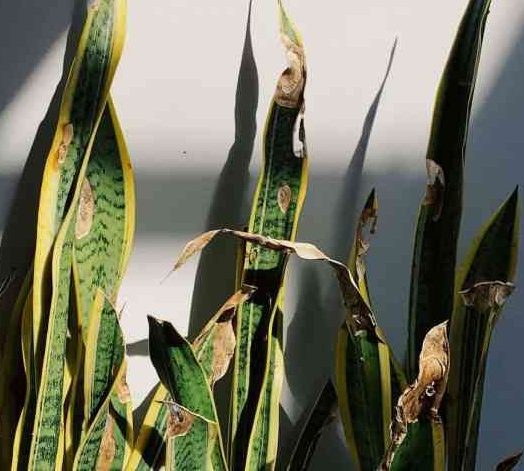
5. Pest Infestation
Pests such as spider mites, mealybugs, and thrips feed on plant sap, causing discoloration.
- Symptoms: Yellow spots, webbing, or cotton-like clusters.
- Fix: Wipe leaves with a damp cloth and treat with neem oil or insecticidal soap.
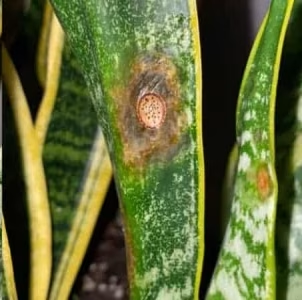
6. Nutrient Deficiency
Lack of nitrogen or other essential nutrients can lead to pale yellow leaves.
- Symptoms: Slow growth, overall yellowing without rot or pests.
- Fix: Feed with a balanced liquid houseplant fertilizer every 4–6 weeks in spring and summer.
7. Natural Aging
Sometimes, yellowing is simply part of the plant’s life cycle.
- Symptoms: Only the oldest bottom leaves turn yellow.
- Fix: Trim old leaves to keep the plant looking fresh.
Snake Plant Yellow Leaves Troubleshooting Chart
| Symptom | Likely Cause | How to Fix |
|---|---|---|
| Yellow leaves at the base, soft roots | Overwatering / Root Rot | Let the soil dry, prune rotten roots, and repot in a well-draining mix. |
| Yellow leaves + soggy soil | Poor Drainage | Use a pot with drainage holes, and add perlite/sand. |
| Yellow + crispy edges | Underwatering | Water when the top 2–3 inches are dry. |
| Sudden yellowing after temperature change | Temperature Stress | Maintain 60–85°F, avoid drafts. |
| Yellow spots + pests visible | Pest Infestation | Wipe leaves, treat with neem oil or insecticidal soap. |
| Slow yellowing + weak growth | Nutrient Deficiency | Apply balanced fertilizer in the growing season. |
| Only the oldest leaves are yellowing | Natural Aging | Prune away old leaves. |
How to Prevent Yellow Leaves on Snake Plants
- Water sparingly: Every 2–4 weeks in summer, less in winter.
- Use free-draining soil: A cactus/succulent mix works well.
- Provide bright, indirect light: Avoid harsh midday sun.
- Check for pests monthly: Early treatment prevents major damage.
- Keep stable temperatures: Protect from extreme heat or cold.
FAQ: Snake Plant Yellow Leaves
